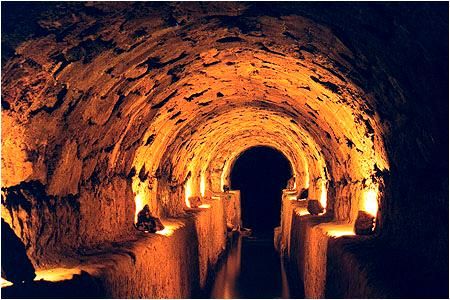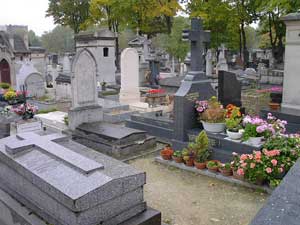When all the artists left Montmartre at the beginning of World War I they didn’t migrate very far. In fact they just moved across the river to the district of Montparnasse.
This neighborhood occupies the 14th arrondissement, a part of the 15th and the southern end of the 6th. After World War I, Montparnasse became infamous as the artistic and intellectual center of Paris and had some gathered an astonishing number of artistic IQs: Picasso, Miro, F. Scott Fitzgerald, Ernest Hemingway and Jean-Paul Sartre were all living there.
Unfortunately much of Montparnasse was leveled in the 1960s to make way for a concrete train station and Paris's only - almost universally disliked - skyscraper, Tour Montparnasse.

Over the years this neighborhood has become a Mecca for Parisians who are looking for more reasonable rents, well-priced cafes and a bit of a real-life vibe that is lacking in other, more in-vogue parts of the city.
Today Montparnasse is an important business district and has cleaned up its act somewhat from the penniless bohemian days. Rue de la Gaite has been upgraded slightly so despite the odd sex shop that still lingers, it is now a popular shopping center.
Montparnasse is also home to the Catacombes de Paris where visitors can go and witness the city’s gruesome history.
Gare Montparnasse is one of Paris's six big terminus railway stations but with a bit of a twist. It boats an ice-skating rink out the front in winter and 3.5 hectares of landscaped terraces that adorn the roof of the station all year round. This unexpected bit of greenery, called Jardin de l'Atlantique, provides a bit of tranquility in the heart of a very busy district.
There is a futuristic sculpture, the Observatoire Météorologique, in the center of the garden which measures precipitation, temperature and wind speed. Next to the Jardin de l'Atlantique is the small Musée Jean Moulin which, unsurprisingly, is dedicated to the Resistance and its leader Jean Moulin during the German occupation of Paris in WWII.
As a fitting nod to its artistic past, Montparnasse is still known for its bright café terraces, bubbling with the conversation of would-be philosophers.
The area is renowned for its literary cafés such as La Closerie des Lilas, La Coupole and La Rotonde which were frequented by the artistic shining stars of Montparnasse’s heyday.
Montparnasse is by no means the district in Paris that is most frequented by tourists but there are still some sights worth seeing in this part of the city. It is a good place to get away from the crowds of happy snappers and find a coffee that gives you change from a €5 note.
If peace and quiet is your prerogative then no where is better than Cimetière du Montparnasse - you won't hear a peep out of the residents. For an unrivalled, yes even by the Eiffel Tower, view of the city, head to Tour Montparnasse.

Cimetière du Montparnasse
"The point is that there is no point (to life)". So says the inscription on one of the tombs in Montparnasse Cemetery. Happily, a visit to this resting place of the rich and famous is definitely not as depressing as the inscription. Proving that Parisian chic extends even to its cemeteries, the Cimetière du Montparnasse is pleasant, pretty even, and very peaceful. It is well worth a visit, especially if you are a fan of Beckett, Baudelaire, Sartre, de Beauvoir, Maupassant, Brancusi, Serge Gainsbourg or actress Jean Seberg, because they are all buried here.
La Coupole
Opened in 1927 La Coupole is one of Paris's most famous brasseries. It once played host to the cream of the intellectual crop in Paris including Apollinaire, Cocteau and Hemingway and thankfully the beautiful Art Deco interior has been preserved. It still retains its hustle and bustle but the reason to visit this charming cafe is really more history than gastronomy. You can book for lunch but you'll have to queue for dinner.
Tour Montparnasse
Whilst Tour Montparnasse may be the ugly duckling of Parisian architecture, it is not to de discounted. In 38 seconds the lift can whisk you up the 210 meter tower to enjoy spectacular views over Paris. This steel-and-glass monolith is actually shorter than the Tour Eiffel but is better placed for stunning views of the city - including, of course, of the Eiffel Tower itself. There is a swanky bar on the 56th floor if you feel like a cocktail to accompany the view or the expensive Le Ciel de Paris restaurant if you want to splurge on dinner.
Fondation Cartier pour L'Art Contemporain
Paris certainly does not lack museums but this one has to be the best place to find cutting-edge art in the city. Jean Nouvel's glass and steel building, an exhibition centre funded by luxury giant Cartier, is as much a work of art as the installations inside. It is home to high-quality exhibitions of contemporary art and the innovative, quirky displays really push the limits of visitors' interaction with art.